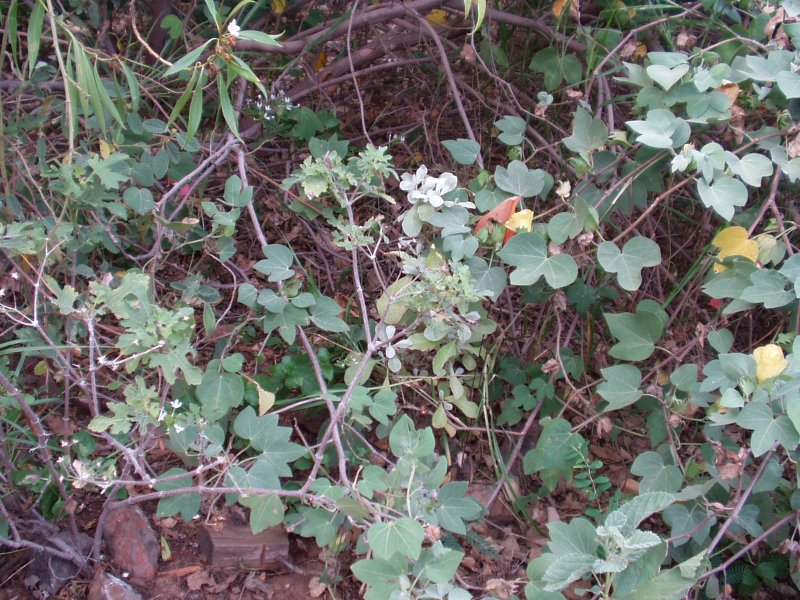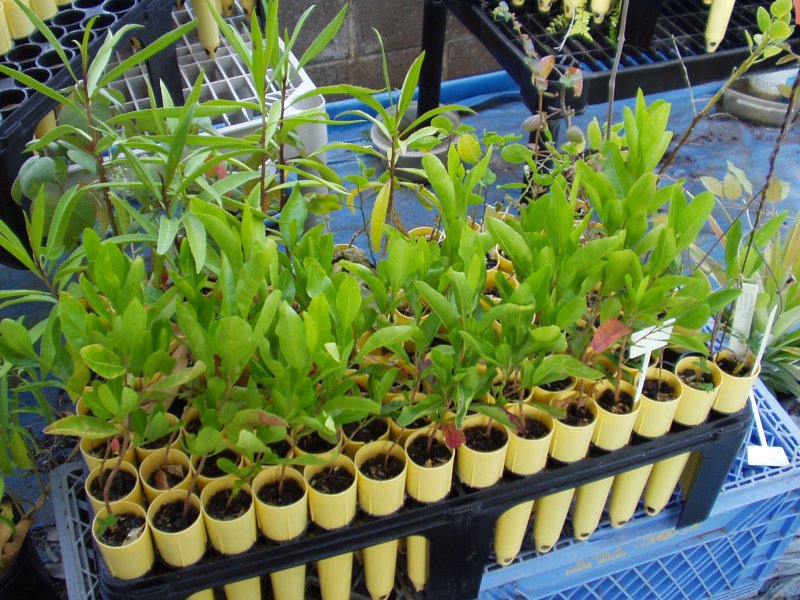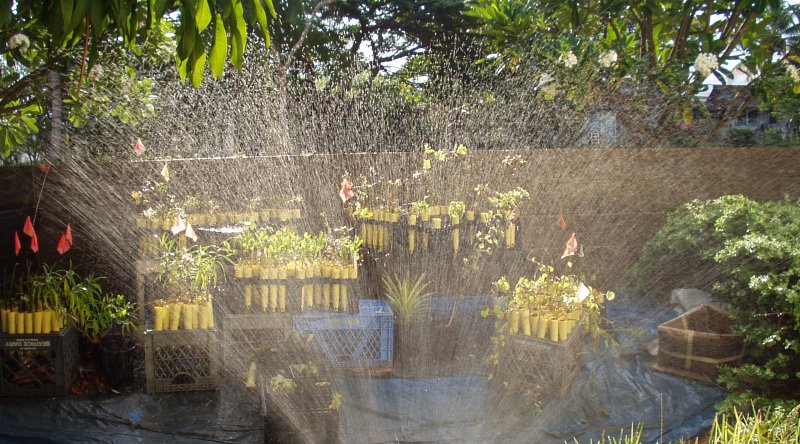Create a small area in every school grounds that is as close as possible to what the Polynesians saw when they arrived at that very patch of ground for the first time.
The idea is to create a site on each school ground where students can witness a little piece of ancient nature.
People living on Maui may have access to nature in the ocean. But on land, almost all remnants of native ecosystems are behind locked gates, or are in the rather remote Haleakala National Park.
What affect does it have on a child to grow up in a place and experience only artificial landscaping, buildings, streets or countryside filled with invasive species? Or for Kanaka Maoli to never see the literal ‘manufacturing plants’ that provided the materials for their ancestors' technology?
The idea here is NOT to have a native plant garden, but rather, an actual piece of forest. A garden can be completely comprehended within a couple of minutes. A forest is so rich with different species that it always has mystery — the closer one looks, the more one finds. It is very important that the “patch of nature” be so rich in life that it is mysterious, so as to inspire the imaginations of the students.
Before the alterations by settlers, all of Maui, except for coastal dunes and new lava, was covered in forest.
But the species were very different between leeward and windward, east and west.
Implementation Phases:
- Decide on how the activities, below, can fit in with the structure of school activities — as part of classes, new classes, extracurricular activities, a new or existing club, etc. Figure out how a long-term commitment to establishing and maintaining the patch can be achieved within the structure of the school. Once the students are brought into the project, these are the tasks:
- Pick the site to be the patch. 30' x 30' is a manageable size, but large enough to be significant.
- Research to find all the native species that once grew in that patch. Some resource books:
- Hawaii Natural History:
- Hawaiian Natural History, Ecology, and Evolution, by Alan C. Ziegler, 2002.
- Hawaiian Coastal Plants, by Mark Merlin, 1999.
- Hawaiian Firest Plants, by Mark Merlin, 1995.
- Hawaiian Biogeography: Evolution on a Hot Spot Archipelago, ed. Warren L. Wagner and V. A. Funk, 1995.
- A Natural History of the Hawaiian Islands: Selected Readings II, ed. E. Alison Kay, 1994.
- Plants and Flowers of Hawai`i, by S. H. Sohmer and R. Gustafson, 1993.
- Hawaii's Vanishing Flora, by Bert Y. Kimura and Kenneth M. Nagata, 1980.
- Hawaii: A Natural History, by Sherwin Carlquist, 1980.
- Native Plant Propagation:
- Growing Hawai`i's Native Plants: A Simple Step-by-Step Approach for Every Species, by Kerin E. Lilleeng-Rosenberger, 2005.
- A Native Hawaiian Garden: How to Grow and Care for Island Plants, by John L. Culliney and Bruce P. Koebele, 1999.
- Growing Native Hawaiian Plants: A How-to Guide for the Gardener, by Heidi Leianuenue Bornhorst, 1996.
- Acquire the propagules:

- Find the nearest remnants of native habitat with native stands of plants to be the source of propagules for the patch. While nurseries may carry many of the species, the sources of those plants may come from all over Maui, or even other islands. And simply buying the plants from a nursery will short cut the educational value of the students growing the plants from nature themselves.
- Get permissions for field trips to the putative sites. For every native species on the list to be planted, find the nearest native stand of that species to be the source.
- This phase of research will entail students contacting:
- Native plant nurseries
- UH Maui College native plant experts
- Haleakala National Park native plant experts
- Department of Land and Natural Resources and US Fish and Wildlife experts.
- Local land owners.
- Identify the species growing on those remnants, and which ones are indigenous and endemic.
- Research how to propagate all of those species, and set up a nursery in the school to propagate them.
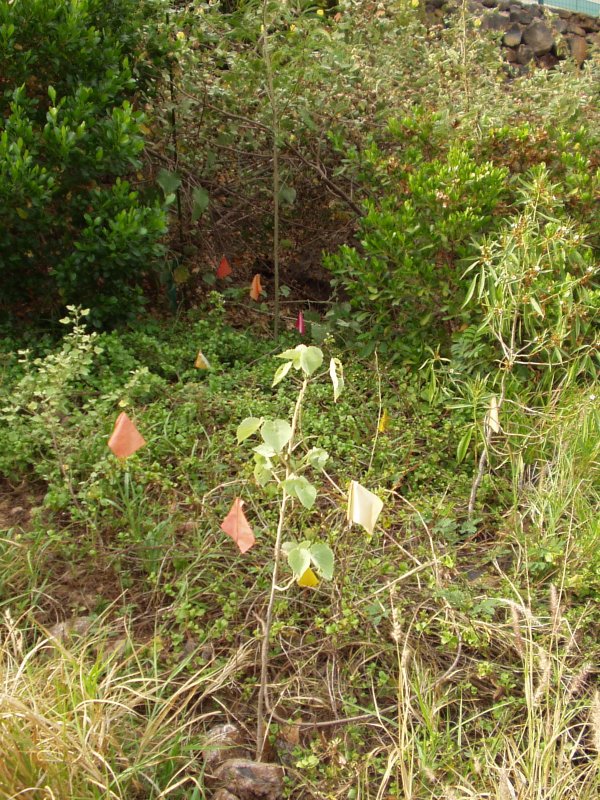
- Propagate the plants for planting in the patch. This will involve growing some from seed, or cuttings, or more complicated techniques such as air layers or grafting. For any species too complicated to propagate, recruit a native plant nursery to help out.
- Prepare the patch for planting. Most schoolyards have lawns or shrub landscaping. When the plants are ready for outplanting, the existing landscaping needs to be removed. This may require help by the maintenance crew. To get the plants established, an irrigation system will be needed. A simple sprinkler system that imitates rain is sufficient.
- Plant the patch.
- The normal rules for spacing used in planting gardens or crops or orchards should not be used. Rather, as many species and numbers of plants that one can pack in the patch should be planted. Don't worry about some plants crowding out others; they will sort things out amongst themselves.
- Make sure that you have enough plants to fill the patch. Filling the patch means that the plants are close enough together so that after a few months to a year, there won't be any bare soil that doesn't have a plant growing above it. The plants themselves will do most of the weed control by completely taking over the space, so that is why it is important that they completely pack the space within a few months. So, the width of the plant after a year's growth needs to be known for each species, and they shouldn't be planted any further apart than that. If there are not enough plants to fill the entire patch, then it should be calculated how much of the patch they can fill, and a contiguous section of the patch be chosen to plant first.
- To access the interior of the patch, some paths should be created. To allow the enjoyment of the patch from the interior, a space with some benches can be created inside the patch.

- While most native Hawaiian species get along fine together, some species can grow so profusely that they will cover the entire patch and shade some plants to death. I would include in this list koali awa vine, Ipomoea indica.
- Have students study the patch as the plants grow and intervene when needed:
- Invasive alien species will be found to grow along with them in the patch. These will need to be weeded.
- Some of the plantings will die; the students should record which species and where and see if they can figure out why they died.
- As the plants fill in the space, the mix of weeds that come up will change. Students should keep records and try to figure out why some weed species disappear while new ones gain.
- Students should survey the animal life they find in the patch. As the patch matures, it may become a home to native insects that find it.
- Different alien species of insects will attack the plants, some minimally, some heavily. The group working on the patch needs to decide what level of intervention to deal with attacks should be used. Choices range from:
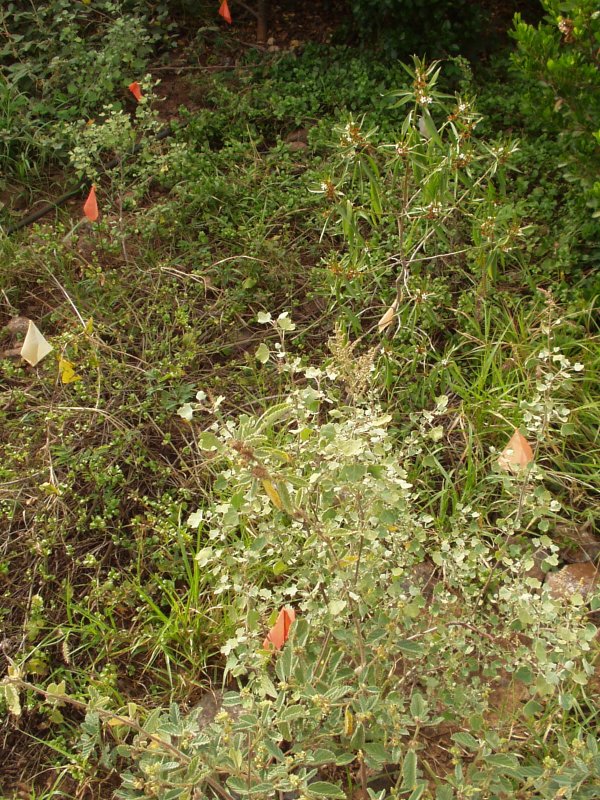
- No intervention — let the biological forces unfold as they may.
- Nature-based intervention — use non-toxic means such as oil sprays, amino-detergent sprays, bacterial sprays (e.g. Dipel), etc. to protect the plants.
- Pesticides — the standard practices used by landscapers, probably used on the other landscaping at the school, but which may present toxicities to the students when they have close engagement with the patch.
- Some students should take the role of keeping a journal of the project, so that future students may read in a narrative fashion the story of what their predecessors did. In addition, logs should be kept so that the records be kept of the original sources for the plants, what problems or pests they encountered, and what succeeded in helping the plants. The logs could be catalogued in the school library for permanent access.
- Research on sources of native plants should continue, and when new remnants are found with species not planted yet in the patch, these should be added.
- Once a number of schools have patches of nature established, visits between schools should be arranged so that students can see how different locations had different kinds of forest growing. The most dramatic contrasts will be between leeward and windward schools.
- The presence of this “patch of nature” on every school grounds in Maui will provide a permanent resource for environmental education, allowing teachers to show students directly what they are discussing in classes on Hawaii natural history, settlement history, and current resource management.

|
